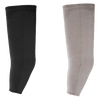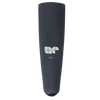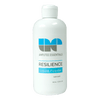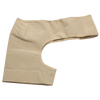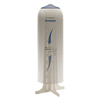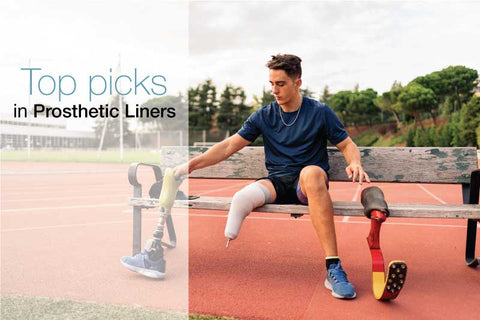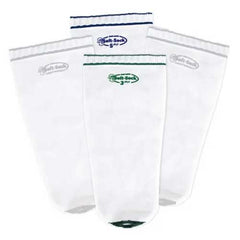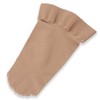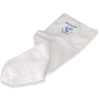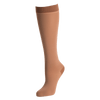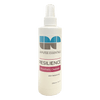Is Shaving Worth the Risk? What to Know If You Wear a Prosthesis
In a rush? Read the summary:
Shaving with a prosthesis isn’t always worth the risk. The combination of pressure, friction, and enclosed space can cause irritation, ingrown hairs, and infections. Dermatologists and prosthetists recommend safer hair removal alternatives, including depilatory creams and laser treatments. If shaving is necessary, use proper techniques and consult a specialist to protect your skin’s health and prevent prosthetic issues.
———
Reading Time: 4 minutes
For many individuals, shaving is just another part of their daily or weekly routine. However, shaving the area inside your prosthetic socket can get complicated. Although some find that smooth skin feels cleaner or more comfortable, prosthetists warn that shaving residual limbs—particularly for individuals with lower limb loss—can pose more risks than benefits.

Why Shaving Can Be Risky
According to Geoffrey Hemmen, a certified prosthetist and CEO of Advance Prosthetics and Orthotics, shaving the skin that directly contacts the prosthesis is generally not advisable. In an interview with Allure, he noted that this practice can lead to ingrown hairs, which may result in infections like folliculitis. This issue is particularly common among individuals with lower limb loss due to the constant pressure and friction in weight-bearing prosthetic sockets.
Ingrown hairs occur when shaved hair curls back into the skin instead of growing outward. Although they may be just itchy or uncomfortable, ingrown hairs can quickly worsen inside a prosthetic socket. The enclosed, warm environment in a prosthetic socket can become a breeding ground for bacteria, making even minor irritations prone to infection.
Furthermore, Hemmen warned about the risk of cuts, indicating that if you nick yourself while shaving and then wear your prosthesis throughout the day, it could lead to further irritation and complications.
If You Choose to Shave
Of course, it’s still your skin and your choice to be hair-free. So, if you’re not ready to stop shaving, there are ways to reduce the risks. Marisa Garshick, a board-certified dermatologist, suggests the following:
-
Shave in the direction of hair growth to lower irritation and reduce the risk of ingrown hairs.
-
Use a sharp, clean blade to achieve a smooth cut without pulling the hair.
-
Apply shaving cream or gel for lubrication and protection.
However, even with these precautions, be aware that shaving always carries some risk, especially on the skin around the residual limb, as it will be under constant pressure inside a prosthesis.
Alternative Hair Removal Methods
If you want to remove hair while avoiding the risks associated with traditional shaving, there are alternative options.
Depilatory creams work by dissolving hair at the skin’s surface instead of cutting it, which can lower the chance of ingrown hairs. If you opt for this method, Garshick recommends choosing a sensitive skin formula to further decrease irritation. And don’t forget to patch test to check for reactions.
For a longer-lasting solution, laser hair removal might be a good option. Although it is more costly than other methods, both Hemmen and Garshick have seen patients benefit from it. Laser treatments target hair follicles directly, providing a lasting reduction in hair growth and possibly eliminating the need for regular shaving or depilatory use.
When to Seek Medical Attention
Even with careful hair removal, problems can still arise. If you notice a red, swollen, or painful bump on your residual limb skin, don’t ignore it. If you spot an ingrown hair that has become inflamed, you should have it checked by a dermatologist, as advised by Garshick in an interview with Allure.
Unlike other areas of your body, the skin under your prosthetic limb has little chance to “breathe” during the day. This can make infections more likely to develop and spread. By addressing issues early, you can prevent a minor irritation from becoming a serious complication.
The Bottom Line
Although you can still shave your residual limb, it carries certain risks. Ingrown hairs, infections, and skin irritation are more likely inside the high-friction, enclosed environment of a prosthetic socket than on other parts of the body.
If maintaining smooth skin matters to you, follow proper shaving techniques, consider safer alternatives, and monitor your skin closely. When in doubt, consult your prosthetist or dermatologist; they can help you develop a hair removal routine that ensures comfort and skin health.
Related Reading:
Stop the Slip: How Antiperspirants Improve Prosthetic Fit and Function
Caring for Your Skin: Managing Prosthetic-Related Contact Dermatitis
Skin Conditions After Limb Loss: What You Need to Know

